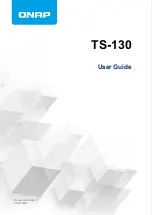
Basic Principles of Operation
5-15
Maxtor D740X-6L 20.0/40.0/60.0/80.0GB AT
('
>
When a data error occurs, the Maxtor D740X-6L hard disk drives check to see if the
error is correctable on-the-fly. This process takes about 160µs. If the error is
correctable on-the-fly, the error is corrected and the data is transferred to the host
system.
If the data is not correctable on-the-fly, the sector is re-read in an attempt to read the
data correctly without applying firmware ECC correction. Before invoking the
complex firmware ECC algorithm, the drive will always try to recover from an error
by attempting to re-read the data correctly. This strategy prevents invoking correction
on non-repeatable errors. Each time a sector in error is re-read a set of ECC
syndromes is computed. If all of the ECC syndrome values equal zero, and xc
syndrome value equals to 0 or 0FF, the data was read with no errors, and the sector is
transferred to the host system. If any of the syndrome values do not equal zero, an
error has occurred, the syndrome values are retained, and another re-read is invoked.
.
Non-repeatable errors are usually related to the signal to noise ratio
of the system. They are not due to media defects.
This event may be significant depending on whether the automatic read reallocation
or early correction features have been enabled. If the early correction feature has been
enabled and a stable syndrome has been achieved, firmware ECC correction is applied,
and the appropriate message is transferred to the host system (e.g., corrected data, etc.).
.
These features can be enabled or disabled through the ATA Set Con-
figuration command. The EEC bit enables early firmware ECC cor-
rection before all of the re-reads have been exhausted. The ARR bit
enables the automatic reallocation of defective sectors.
The Maxtor D740X-6L drives are shipped from the factory with the
automatic read reallocation feature enabled so that any new defective
sectors can be easily and automatically reallocated for the average AT
end user.
4)35.3
In the factory, the media is scanned for defects. If a sector on a cylinder is found to be
defective, the address of the sector is added to the drive’s defect list. Sectors located
physically subsequent to the defective sector are assigned logical block addresses such
that a sequential ordering of logical blocks is maintained. This inline sparing technique
is employed in an attempt to eliminate slow data transfer that would result from a
single defective sector on a cylinder.
If more than 32 sectors are found defective, the above off-line sparing technique is
applied to the 32 sectors only. The remaining defective sectors are replaced with the
nearest available pool of spares.
Defects that occur in the field are known as grown defects. If such a defective sector is
found in the field, the sector is reallocated according to the same algorithm used at the
factory for those sectors that are found defective after the first 32 spares per pool of
spares; that is, inline sparing is not performed on these grown defects. Instead, the
sector is reallocated to an available spare sector on a nearby available pool of spares.
Summary of Contents for D740X-6L 20.0 AT
Page 1: ......
Page 10: ...Table of Contents ii Maxtor D540X 4K 20 0 40 0 60 0 80 0GB AT...
Page 14: ...About This Manual 1 4 Maxtor D740X 6L 20 0 40 0 60 0 80 0GB AT...
Page 18: ...General Description 2 4 Maxtor D740X 6L 20 0 40 0 60 0 80 0GB AT...
Page 38: ...Installation 3 20 Maxtor D740X 6L 20 0 40 0 60 0 80 0GB AT...
Page 66: ...Basic Principles of Operation 5 17 MaxtorD740X 6L 20 0 40 0 60 0 80 0GB AT...
Page 88: ...ATA Bus Interface and ATA Commands 6 22 Maxtor D740X 6L 20 0 40 0 60 0 80 0GB AT...
















































